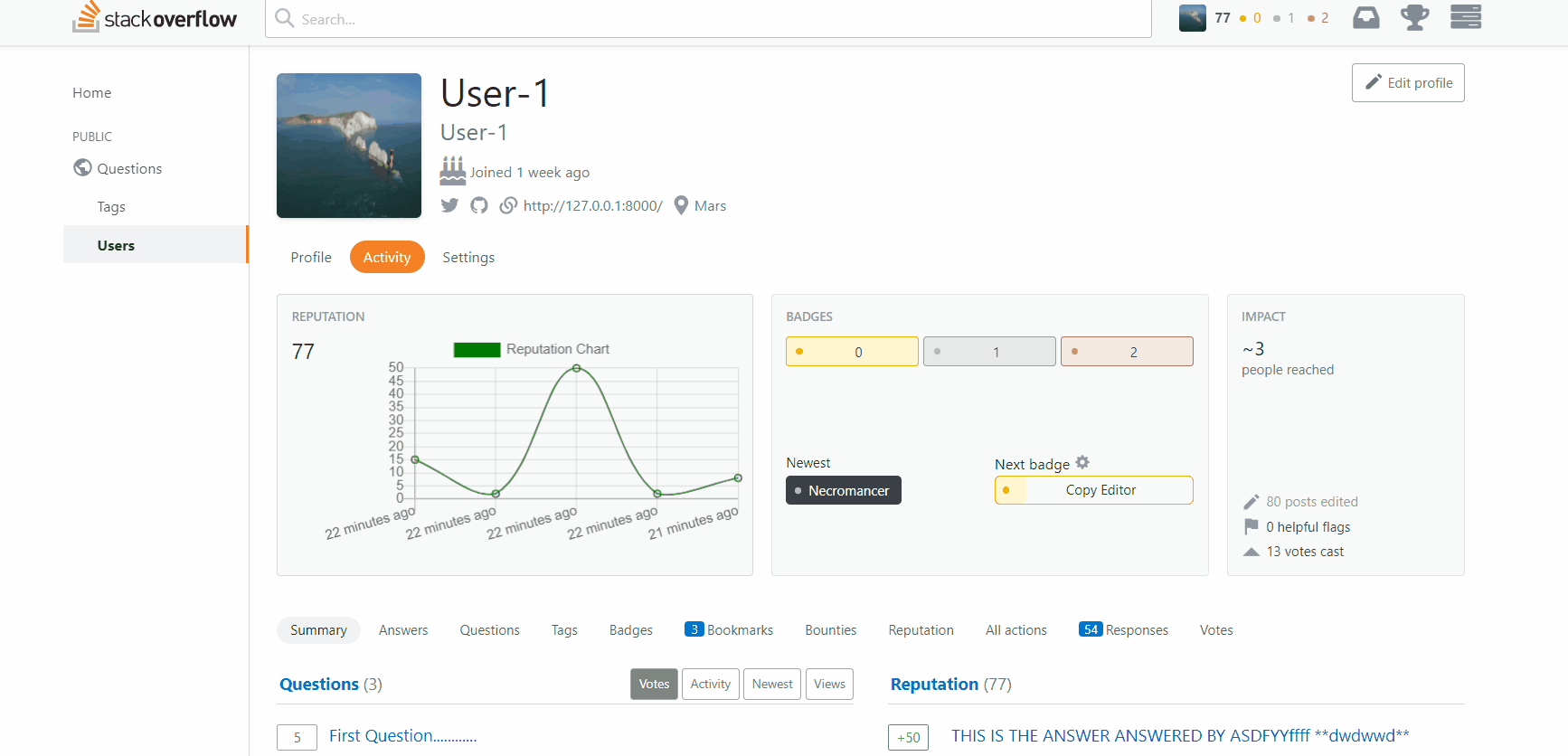Clone of Stack Overflow where I implemented nearly all of its functionalities. My intention was to provide insight and demonstration to developers on the inner workings of Stack Overflow - including how tasks are performed behind the scenes and how queries are executed..
Note: Please have a look at the Blog explaining What I learned from this Project?

Here is a working live demo : Demo (Removed from heroku because usage of so's production LOGO)
Python 3.7.x
Django Web Framework 3.2.x
Redis 5.x
BootStrap 4
Jquery 3
Postgresql 14
50+ Badges are implemented to award
20 Privileges to Earn
Track Badges
Reputation Awarding
Privilege and Activity Notifications
Live Q&A MarkDown Preview
User @mentioning in comments
Create and award Bounties
Threading to keep track of the remaining days of Bounty.
Reviewing Tasks :
First Question Review
First Answer Review
Late Answer Review
Review Flag Posts
Review Flag Comments
Review Close Votes
Review ReOpen Votes
Review Low-Quality Posts
Review Suggested Edits
And much more. You can find list of all functionalities Here
Clone this repository
Clone this project using
$ git clone https://github.com/Yawan-1/StackOverFlow--Clone
For Postgresql usage*, you will need to download and install it.
Download Postgresql from this Link
After installation, create Database in postgresql shell using these commands
CREATE DATABASE so_clone;
CREATE USER so_clone_user WITH PASSWORD 'password';
GRANT ALL PRIVILEGES ON DATABASE so_clone TO so_clone_user;
and fill database name , database password and user in settings.py like
DATABASES = {
'default': {
'ENGINE': 'django.db.backends.postgresql_psycopg2',
'NAME': 'so_clone',
'USER': 'so_clone_user',
'PASSWORD': 'password',
'HOST': 'localhost',
'PORT': '',
}
}*Note: If you are setting up this project using sqlite, you have the option to bypass the postgresql installation step. To do so, please consider commenting out the postgresql configuration and uncommenting the sqlite configuration.
Now run make migrations command, running make migrations command will perform Data Migrations to save the "Badges" in the database.
then migrate to load the operations of Data Migrations in database.
$ python manage.py makemigrations $ python manage.py migrate
Migration Operations will be automatically created on migration creation to save Tags and Tag Badges.
Then, simply run the server using this command.
$ python manage.py runserver
The following details and steps on how to deploy this application
See detailed Deploying django app on Heroku
If you have any question or issues, It may have bugs that i may have missed. You can create Pull request.
Note: Frontend and complete design is also inside this project's repo (html, css).